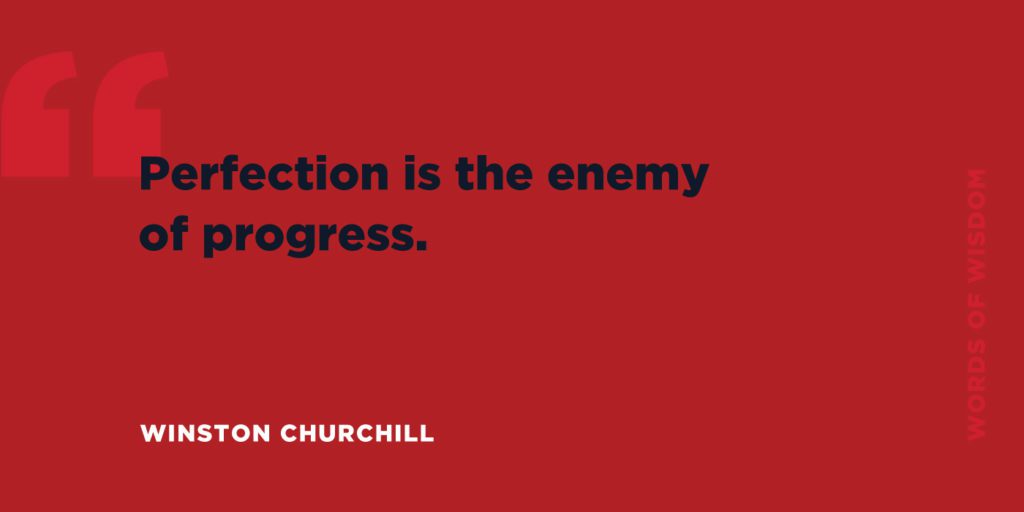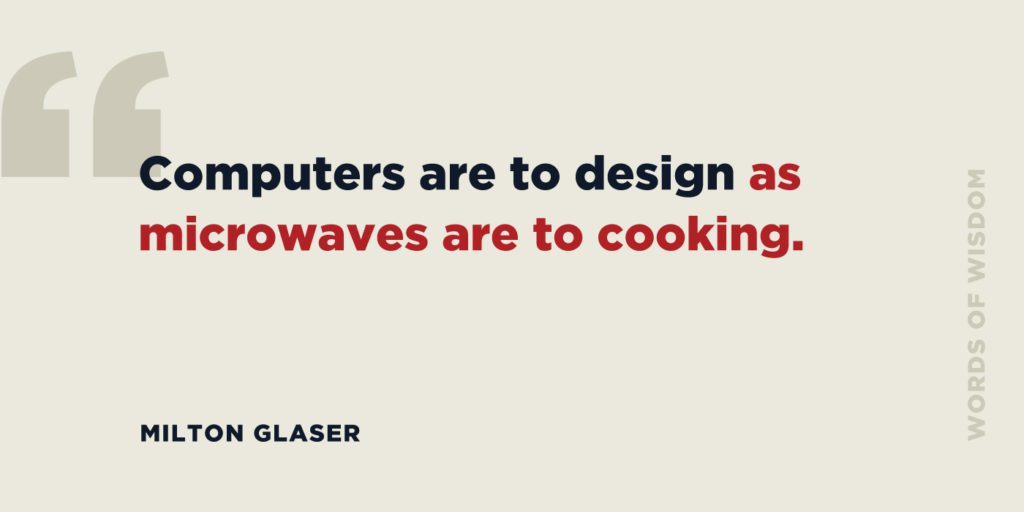August 23, 2019
Beating the Blank Canvas
4 min readSo you’ve done it. You’ve listened intently to your client’s business needs and completed a competitive analysis. You’ve put together moodboards, and after a handful of other predesign steps, you’re finally ready to start designing an awesome new website. It’s going to be like nothing anyone has ever seen before, and will win all the awwwards you can imagine.
But that blank white artboard is staring you in the face, and nothing is happening. You feel the weight of the project, and fret that it has to be absolutely perfect. After an hour of sitting in frustration, you’ve had no design epiphanies, no lightbulb moments, nothing.

Don’t worry, it’s not just you – this is a pretty common thing in the world of design. Below are some common struggles designers experience when getting started with a new design project, and ways to push through.
Getting lost in the rabbit hole of research
The research & planning phase is one of my favorite parts in getting started with a new project. I start by learning about the industry (storing my random newfound knowledge for the day I’m finally on Who Wants to Be a Millionaire?). Next, I sniff out the competition, think through the user experience, and pull 1,345 screenshots of designs I like into my inspiration folder. (Still in the inspiration phase? Maybe our work from last year can help spark some ideas for your own project.)
Thorough research is extremely important, but we must be careful to balance thinking with doing. Sometimes designers don’t have an organized design process, so they get stuck in this step. Here at Drift, we have a checklist we work through so that we stay on track and on time.
Other times, designers know what they should do next, but they’re scared to move on. When I freeze up at this point, I find it helps to set hard deadlines for research and planning. Once I’ve collected all the information I need and formed a clearly defined strategy, it’s time to move forward.
Procrastination
Speaking of steps, be sure to give yourself some structure and assign deadlines to all the tasks associated with your project. Parkinson’s law says that “work expands so as to fill the time available for its completion”. When you have too much time ahead to complete an assignment, it’s easy to slack and put things off until later. Break down your tasks and give each one a deadline. If your boss or client hasn’t assigned any hard deadlines, make them for yourself.
Starting with the computer
Step away. From. The laptop. It’s easy to want to skip steps and go straight to the screen, but it’s crucial to know what your design solutions are before you start implementing them. Dust off your favorite pen, grab some paper, and start brainstorming. Sketch, mind map, whatever you please; just get your ideas on paper. Once you’ve developed a solid concept, use the computer to execute your ideas.

No Breakthroughs
Sometimes, I just get plain stuck. I can’t shake the feeling that there are no new ideas under the sun. When we get stuck, it’s probably a good indicator that we’ve been working in a vacuum. Take advantage of your team and start collaborating. Even spending just 10 minutes as a group can help you work through a problem much faster, oftentimes with more sound solutions.
Another easy fix is to take a break. Harvard researcher Shelley H. Carson says, “a distraction may provide the break you need to disengage from a fixation on the ineffective solution.” Calming down and doing something like taking a short walk can bring creative solutions to the forefront of your mind.
Too Many Choices
It’s fun to explore the endless possibilities, but at a certain point it’s time to be decisive and just get started. When we start creating wireframes for our websites at Drift, we usually start with the homepage. For each section of the homepage, we draw up about 4-5 ideas on sticky notes. Then, we pick one sticky note from each section. Once we have a set that feels cohesive, we go with it. There are always tweaks, and sometimes we go back to the drawing board completely. But once we’re moving, we gain momentum and come up with some pretty awesome (in our humble opinion) design solutions. (Be sure to remember these 3 goals as you start working on a custom website.)

Starting from scratch and staring into a blank canvas doesn’t have to be a daunting experience. With deliberate practice, we as designers can train ourselves to balance thinking with doing, fend off procrastination, trust the process, work through creative slumps, and act more decisively.






